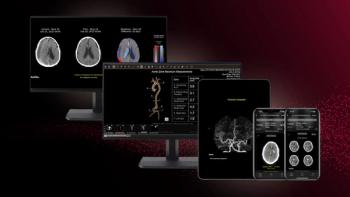
PET/CT Bests Biopsy in Lymphoma Progression to Bone Marrow
18F-FDG PET/CT can better assess bone marrow involvement in patients with newly diagnosed diffuse large B-cell lymphoma than can standard bone biopsy.
Examination with 18F-FDG PET/CT can better determine the level of bone marrow involvement in patients with newly diagnosed diffuse large B-cell lymphoma (DLBCL) than can bone marrow biopsy, according to a study published in
French researchers performed a retrospective study of 133 patients diagnosed with DLBCL between June 2005 and October 2011. To determine if there was bone marrow involvement, all the patients underwent whole-body 18F-FDG PET/CT and a bone marrow biopsy from the iliac crest before any treatment. Median follow-up was 24 months, ranging from one to 67 months.
A final diagnosis of bone marrow involvement was made if the biopsy was positive, or if the positive PET/CT scan was confirmed by a guided biopsy, by targeted MRI or, after chemotherapy, by the concomitant disappearance of focal bone marrow uptake and uptake in other lymphoma lesions on 18F-FDG PET/CT reassessment. Progression-free survival and overall survival were then analyzed.
The results showed that 33 patients were considered to have bone marrow involvement, eight of whom were positive according to the biopsy. Thirty-two were positive according to the PET/CT scan.
The 18F-FDG PET/CT was more sensitive (94 percent versus 24 percent), showed a higher negative predictive value (98 percent versus 80 percent), and was more accurate (98 percent versus 81 percent) than was the biopsy. Twenty-nine patients (22 percent) experienced recurrence or disease progression during follow-up and 20 patients died (15 percent).
Among the 26 patients with positive 18F-FDG PET/CT results and negative biopsy results, 11 were upstaged to stage IV by PET/CT, which changed their treatment plans. 18F-FDG PET/CT was also determined to be an independent predictor of progression-free survival.
The researchers concluded that bone marrow involvement assessed with 18F-FDG PET/CT provides better diagnostic performance and prognostic stratification in newly diagnosed DLBCL than does bone marrow biopsy.
Newsletter
Stay at the forefront of radiology with the Diagnostic Imaging newsletter, delivering the latest news, clinical insights, and imaging advancements for today’s radiologists.



























